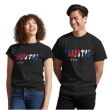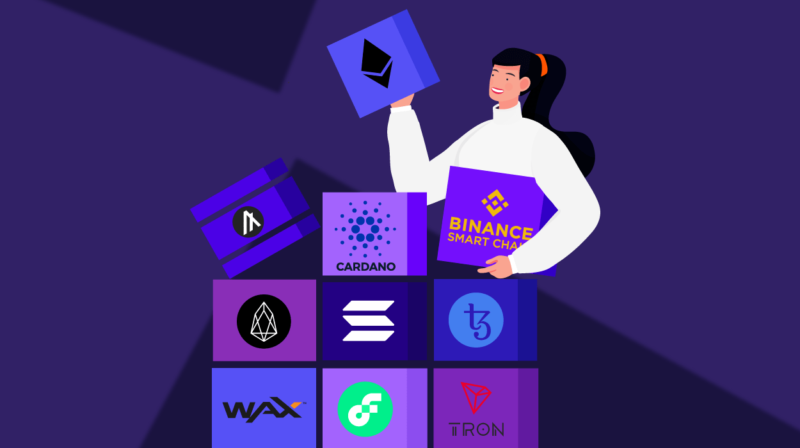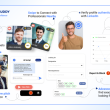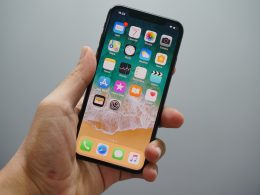Introduction
The explosion of non-fungible tokens (NFTs) has transformed the digital economy. As NFTs become increasingly mainstream, the demand for platforms that can aggregate multiple marketplaces into one unified ecosystem is growing rapidly. An NFT aggregator marketplace offers users the ability to browse, compare, and trade NFTs from various sources without hopping between multiple platforms. In 2025, with the maturity of blockchain technology and widespread adoption of NFTs, building a robust NFT aggregator marketplace can provide immense value for both developers and users.
This guide provides a step-by-step roadmap for developing an NFT aggregator marketplace, covering every stage from concept to launch.
Understanding NFT Aggregator Marketplaces
Before diving into development, it is essential to understand what an NFT aggregator marketplace is and why it is becoming crucial in the NFT ecosystem.
1. What Is an NFT Aggregator Marketplace?
An NFT aggregator marketplace is a platform that consolidates listings from multiple NFT marketplaces into a single interface. Instead of browsing multiple platforms individually, users can view prices, metadata, ownership history, and other details from different marketplaces at once. This aggregation improves efficiency, transparency, and trading opportunities.
2. Why NFT Aggregators Are Important in 2025
- Fragmented NFT Market: The NFT ecosystem is spread across several platforms, making it cumbersome for collectors and traders to track assets. Aggregators solve this by providing a centralized view.
- Price Comparison: Users can compare NFT prices across marketplaces, ensuring they make informed purchase decisions.
- Enhanced Liquidity: Aggregation encourages higher trading volumes by connecting buyers and sellers from different platforms.
- Data Analytics: Aggregators can offer insights into market trends, ownership patterns, and NFT valuations, providing an analytical edge for investors.
NFT Aggregator Marketplace Development Guide for 2025
Step 1: Conceptualizing Your NFT Aggregator Marketplace
Every successful marketplace starts with a clear concept. This phase involves identifying the target audience, defining the value proposition, and outlining the platform’s features.
Defining the Target Audience
The NFT space is diverse, including artists, collectors, gamers, investors, and brands. Determine which segment your marketplace will primarily cater to. For example, a gaming-focused aggregator may prioritize in-game asset listings, while a collector-focused platform may highlight art NFTs.
Establishing the Unique Selling Proposition
To stand out in the competitive NFT landscape, your platform should offer unique features or superior usability. Consider the following differentiators:
- Real-time price comparisons across marketplaces
- Advanced filtering options (by creator, rarity, price, or category)
- AI-powered recommendations for collectors
- Aggregation of multiple blockchain networks (Ethereum, Solana, Polygon, etc.)
- Analytics dashboards for market insights
Feature Roadmap
List the core and advanced features of your NFT aggregator marketplace:
Core Features:
- Multi-marketplace integration
- NFT search and filtering
- User wallet connectivity
- Purchase and bidding options
- Listing information display (price, metadata, ownership history)
Advanced Features:
- Analytics dashboard for market trends
- AI-driven personalized recommendations
- Cross-chain NFT aggregation
- Social and community features (likes, shares, comments)
- Alerts for price drops or NFT availability
Step 2: Selecting the Right Blockchain Infrastructure
The choice of blockchain is crucial for your NFT aggregator. Most marketplaces are built on Ethereum due to its large NFT ecosystem, but other blockchains like Solana, Binance Smart Chain, and Polygon offer faster transactions and lower fees.
Key Considerations
- Blockchain Compatibility: Your aggregator should support multiple blockchains to maximize reach. Cross-chain support is essential for scalability in 2025.
- Transaction Speed and Cost: Blockchains with high gas fees can deter users. Platforms like Polygon and Solana offer faster and cheaper alternatives.
- Security: Ensure the blockchain provides robust security features to protect user assets and data.
- Interoperability: The ability to integrate with other NFT marketplaces and decentralized exchanges is critical for aggregator functionality.
Step 3: Designing the Architecture
A well-planned architecture ensures your platform is scalable, secure, and capable of handling high traffic volumes.
Backend Architecture
The backend should manage data aggregation, user authentication, wallet integration, and marketplace interactions. Consider using:
- APIs: Connect with NFT marketplaces to fetch real-time data. Ensure the API supports metadata, pricing, and ownership history.
- Database: A robust database (e.g., PostgreSQL or MongoDB) to store user preferences, transaction history, and aggregated NFT data.
- Server Infrastructure: Cloud-based solutions like AWS, Google Cloud, or Azure to ensure scalability.
Frontend Architecture
The frontend should provide a seamless and intuitive user experience:
- Responsive design for web and mobile
- Dynamic filtering and search functionality
- Real-time price and availability updates
- Integration with web3 wallets (MetaMask, Phantom, Coinbase Wallet)
Security Architecture
Security is non-negotiable in the NFT space:
- Implement encryption for sensitive data
- Secure API endpoints to prevent unauthorized access
- Use smart contract auditing for any on-chain operations
- Multi-factor authentication for user accounts
Step 4: Integrating Marketplace APIs
API integration is the heart of an NFT aggregator. It allows your platform to pull listings, prices, and metadata from various NFT marketplaces.
Steps for API Integration
- Identify Target Marketplaces: Choose marketplaces with high trading volume and diverse NFTs. Examples include OpenSea, Rarible, Magic Eden, and Solanart.
- Understand API Documentation: Study the API endpoints to understand data structures, rate limits, and authentication methods.
- Implement Data Fetching: Use API calls to retrieve NFT listings, ownership history, and metadata. Implement caching mechanisms to reduce load and improve performance.
- Normalize Data: Different marketplaces may provide data in different formats. Standardize this data to maintain a consistent user experience.
- Test Aggregation: Ensure real-time updates are accurate and that users can view aggregated listings seamlessly.
Step 5: Wallet Integration and User Authentication
NFT transactions require secure wallet connectivity and user authentication.
Wallet Integration
- Web3 Wallets: MetaMask, Phantom, Coinbase Wallet
- Multi-Chain Support: Ensure wallets can interact with different blockchains
- Transaction Handling: Allow users to buy, sell, and bid on NFTs directly from their wallets
User Authentication
- Sign-In Options: Wallet-based login, social media login
- Security Measures: Two-factor authentication, biometric verification (optional for mobile apps)
- User Profiles: Display transaction history, favorited NFTs, and portfolio analytics
Step 6: Implementing Smart Contracts
Smart contracts enable secure and transparent NFT transactions. For an aggregator, smart contracts may be necessary for additional functionality like escrow, bidding, or automated royalty distribution.
Key Considerations
- Escrow Contracts: Hold funds securely until transactions are confirmed
- Royalty Distribution: Automatically distribute royalties to NFT creators
- Bidding and Auction Logic: Ensure fair and transparent auction mechanisms
- Audit: Conduct third-party audits to prevent vulnerabilities and exploits
Step 7: Building the Frontend User Interface
The frontend is where users interact with your platform. It must be intuitive, responsive, and visually appealing.
UI/UX Best Practices
- Search and Filters: Users should quickly find NFTs based on criteria like price, rarity, creator, and blockchain.
- NFT Display: High-resolution images, metadata, and ownership history
- Real-Time Updates: Prices and availability should update in real time
- Mobile Optimization: A significant portion of users access NFTs via mobile devices
- Interactive Features: Favorites, watchlists, alerts, and social engagement
Future Trends for NFT Aggregator Marketplaces in 2025
As the NFT ecosystem evolves, aggregator marketplaces must adapt to stay competitive. Key trends include:
- AI-Powered Recommendations: Platforms can suggest NFTs based on user preferences, trends, and trading history.
- Cross-Chain Aggregation: Supporting multiple blockchains ensures access to a larger NFT inventory.
- Enhanced Analytics: Advanced dashboards for price tracking, market trends, and ownership analytics.
- Fractional NFTs: Aggregators may facilitate fractional ownership to improve accessibility.
- Gamification: Rewards and gamified features to enhance user engagement.
Conclusion
Building an NFT Aggregator Marketplace Development in 2025 requires a thorough understanding of blockchain technology, NFT ecosystems, and user behavior. From conceptualization and blockchain selection to API integration, wallet connectivity, and marketing, each step is critical for success. By following this step-by-step guide, developers can create a robust, user-friendly platform that addresses the challenges of a fragmented NFT market while providing value to collectors, traders, and investors.
The NFT space continues to grow, and aggregator marketplaces will play a pivotal role in shaping its future. Those who innovate, prioritize user experience, and adopt emerging technologies will lead the next wave of NFT trading and investment platforms.












